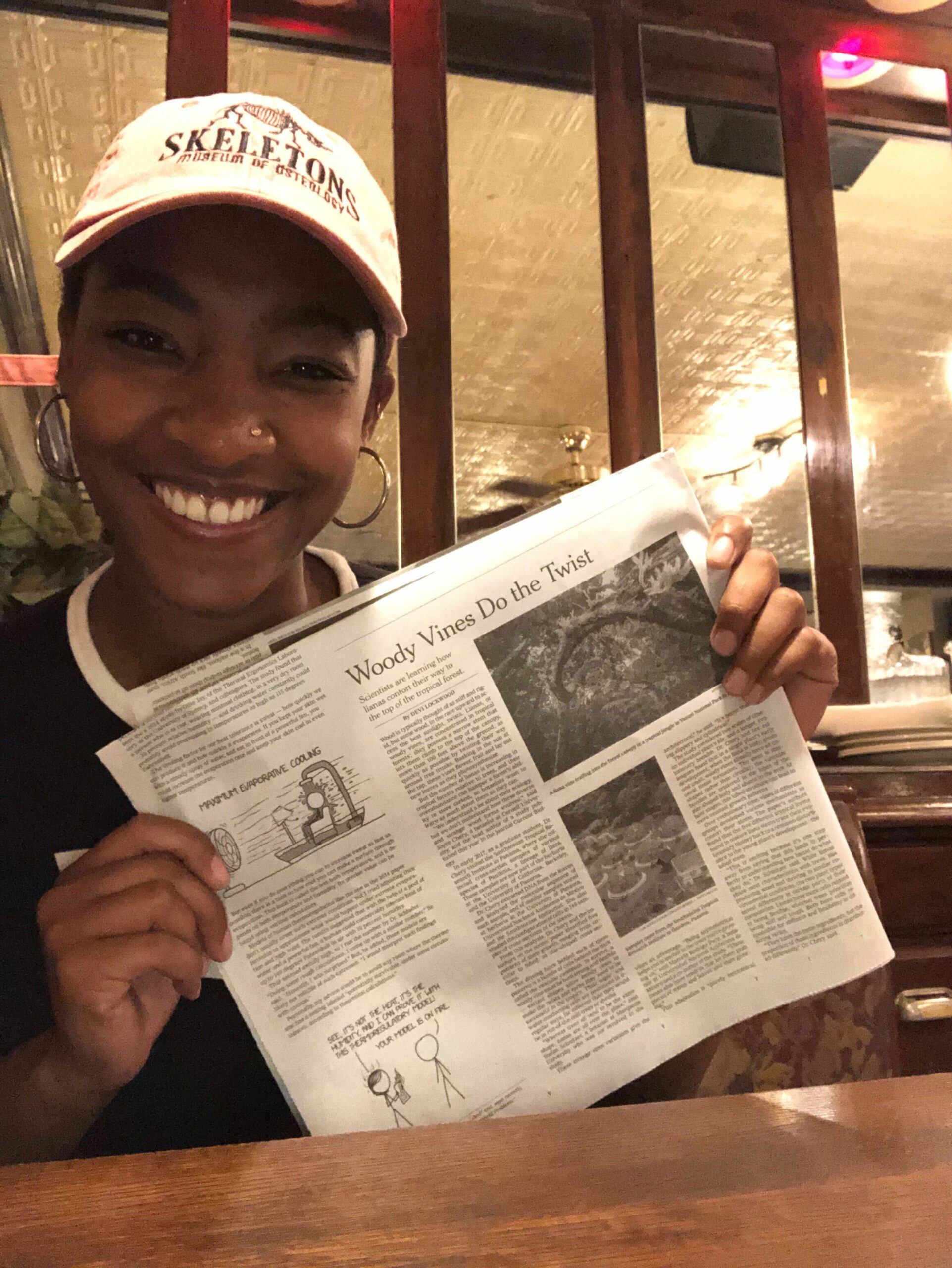Rlab alum Joyce appears in The New York Times
Published on August 1, an article in The New York Times called “How Woody Vines Do the Twist” put a spotlight on former rLab member Joyce Chery. Now a very-soon-to-be-professor at Cornell University, Joyce studies woody vines, known as lianas, in an attempt to understand the fundamental question of how plants evolved the ability to climb.
Over the course of her research, Joyce has identified five different ways in which the lianas of the maple family, Sapindaceae, can develop. These newly described developmental programs deviate from the typical stem development of trees and shrubs, and result in mature plants with irregular configurations of their water and sugar conducting cells.
Through careful anatomical study, Joyce realized that all of the unusual mature wood types developmentally trace back to the same modification that occurs during early plant development. Instead of the expected circular stem with equally distributed vascular tissue that is found in most trees, in these lianas, the early plant stem is star shaped with clumps of cells, or vascular bundles, distributed unevenly. By placing development into a phylogenetic context, it was additionally revealed that the novel star-shaped young plant is also the evolutionary precursor to all forms of irregular wood formation.
As stated in the article, discovering the structure of lianas is an important step in understanding their ability to outmaneuver trees and sometimes become overabundant — something that can affect the storage of carbon in a forest.
In addition to being able to read this article online, a version of the story appears in the August 4 print edition of The New York Times.
